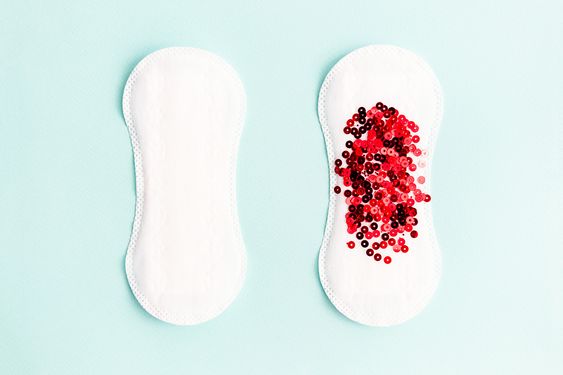

A woman’s reproductive system consists of several organs. Which prepares itself for the possibilities of having a baby every month. This reproductive system is made up of ovaries, fallopian tubes or uterine tubes, uterus or womb and vagina. All these organs play their role in the Menstruation Cycle, which is supposed to release an egg from the ovary around 28 days. So, here let’s know about how Menstruation Cycle works.
(Also Read: Can You Get Pregnant While Having Sex On Your Period?)
How Does The Menstruation Cycle Works?
- Let’s have a look inside the woman’s body and know what happens during this Menstruation Cycle.
- The ovaries are two almond-shaped glands located on either side of the uterus. They are surrounded by finger-like ends of the fallopian tubes, which are hollow passages and connect the ovaries to the uterus.
- The uterus is a hollow, inverted pear-shaped organ with thick muscular walls where the fetus grows and becomes a baby. It is attached to the upper end of the vagina.
(Also Read: What Are The Symptoms Of Ovulation? )
- Eggs develop and mature inside the ovaries, this process is controlled by the pituitary gland at the base of the brain, which releases hormones into the bloodstream, causing the ovaries to release a mature egg.
- This process is known as ovulation, this process usually takes between 13 – 15 days of each Menstruation Cycle (MC), the first day of the Menstruation Cycle (MC) is when your menstrual cycle, blood for periods Starts flowing
(Also Read: How And When To Use Abortion Pill?)
- The ovaries also release the female hormone estrogen, which thickens the uterine lining in preparation to receive the fertilized egg.
- Once released from the ovaries, the egg makes its way to the courtyard along the fallopian tube and the ovum begins to grow, if sex is to be had during this time, this egg, from sperm Can be found, and fertilized, this process is known as fertilization.
- The fertilized egg moves through the fallopian tube into the uterus, where it embeds (attaches) itself to the thick layer of the uterus and continues to grow.
(Also Read: What Is Your Vaginal Discharge Saying About Your Health?)
- If the egg is not fertilized, it breaks down, and the hormone levels produced by the ovaries begin to fall.
- This also causes the lining of the uterus to break down, low levels of hormones break down both the undigested egg and the lining of the uterus. They are ejected from the vagina during menstruation as period blood, known as menstruation, and then the cycle resumes.
(Also Read: Pelvic Inflammatory Disease | Risk | Treatment)









Leave a Comment